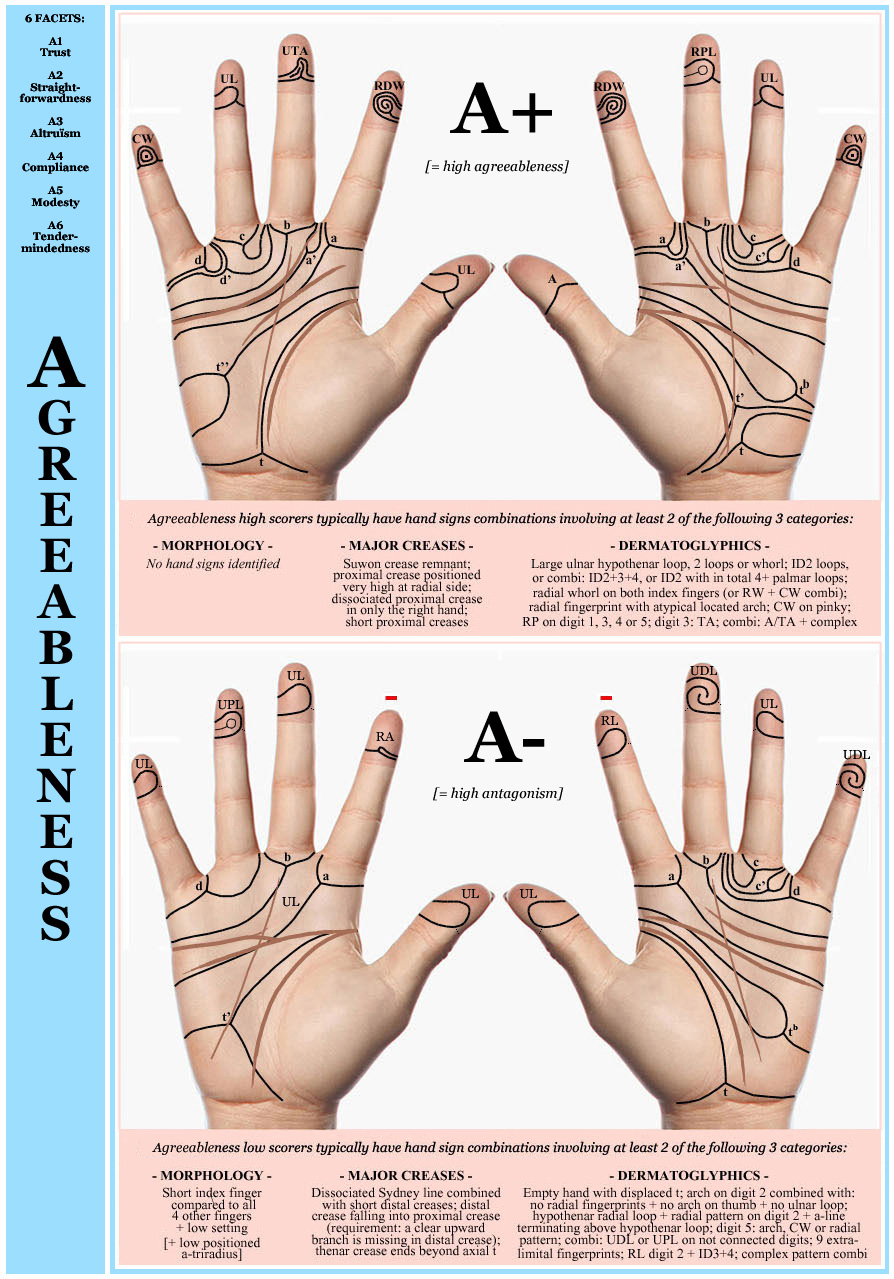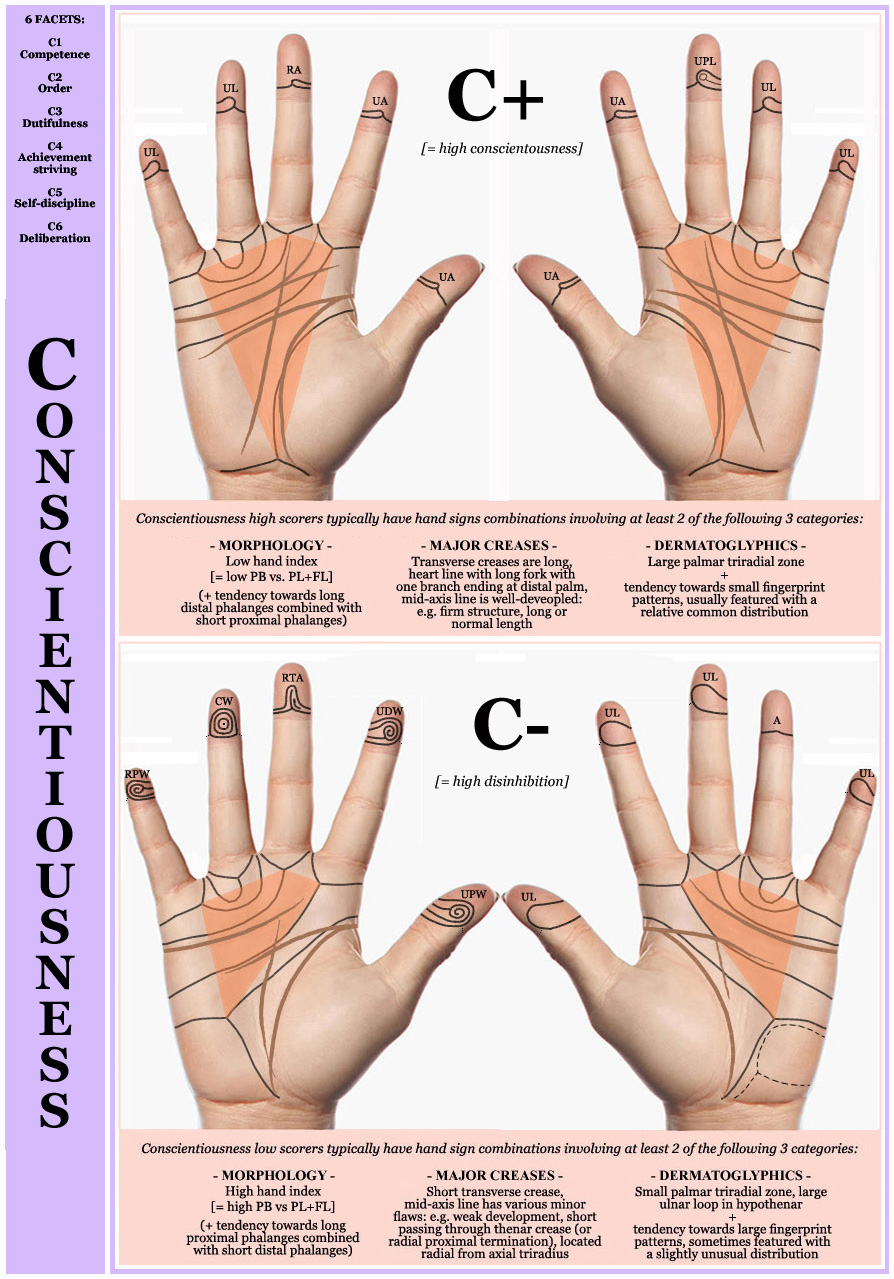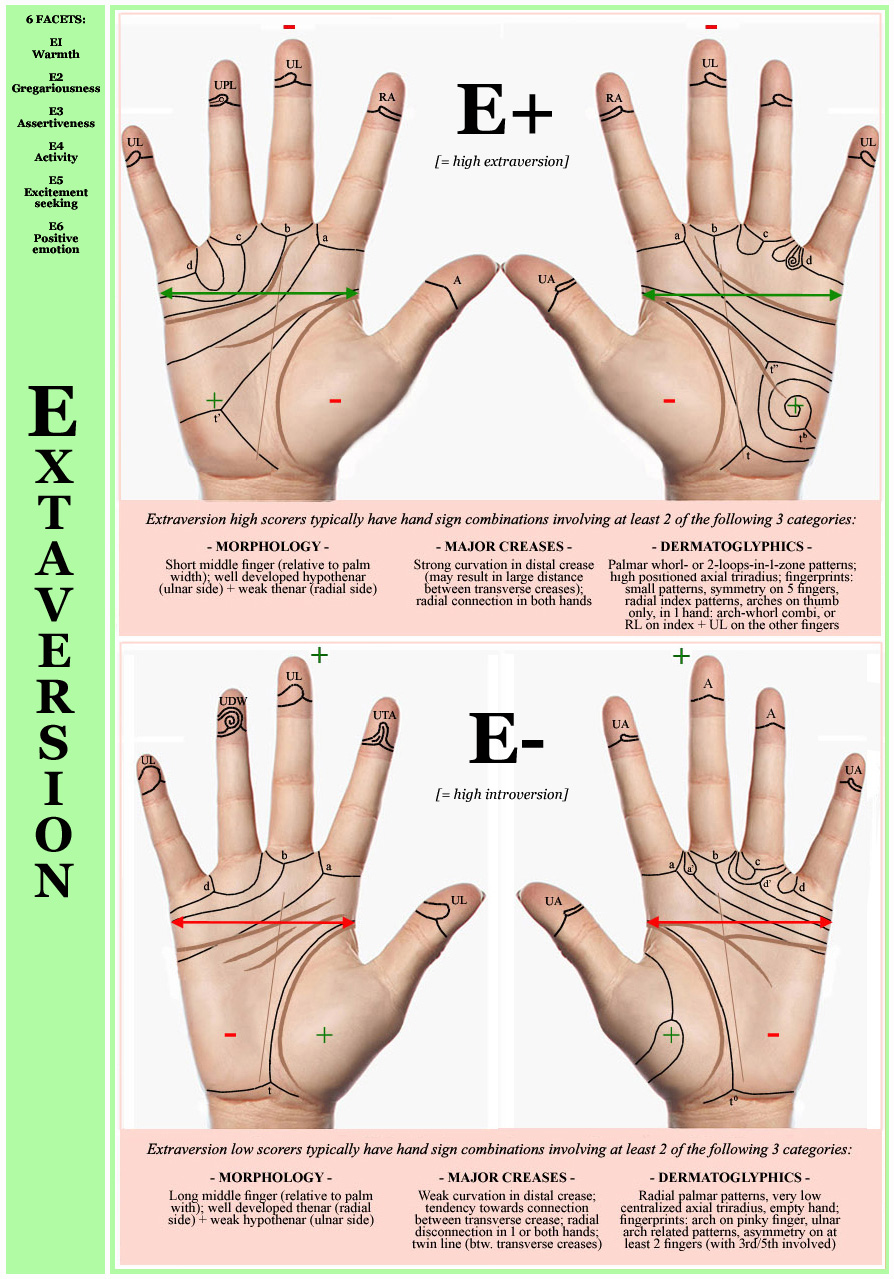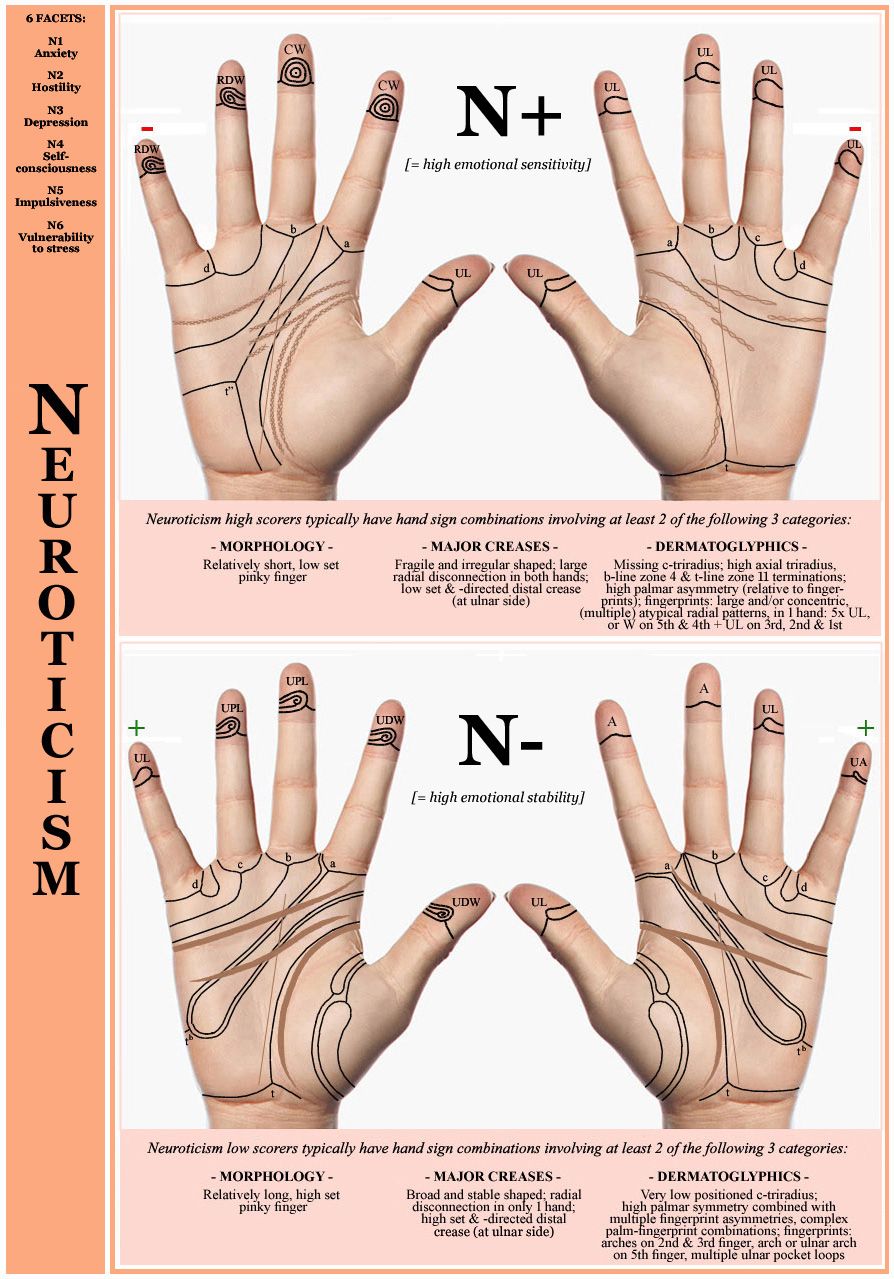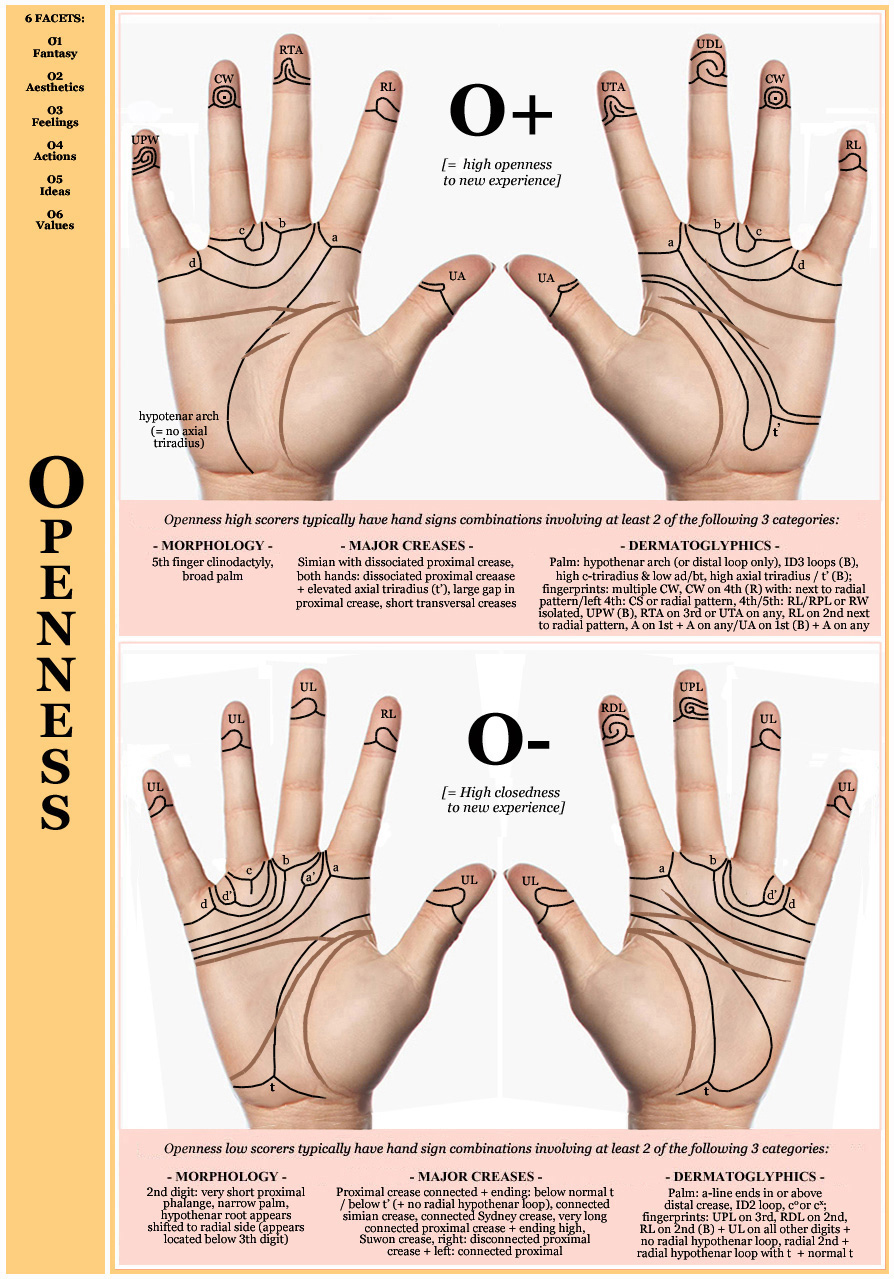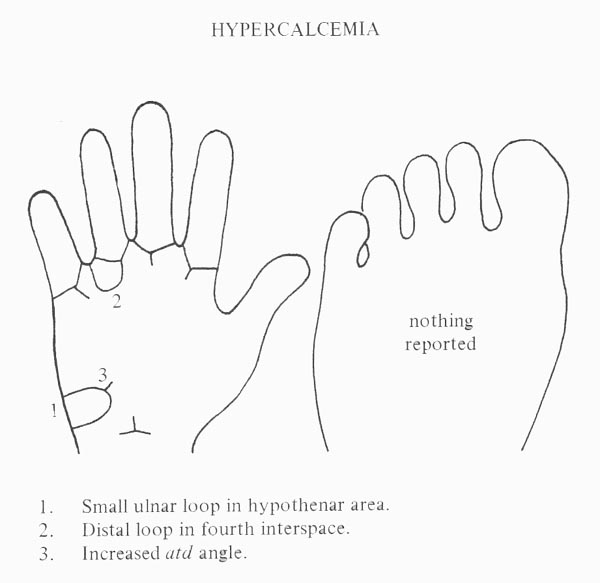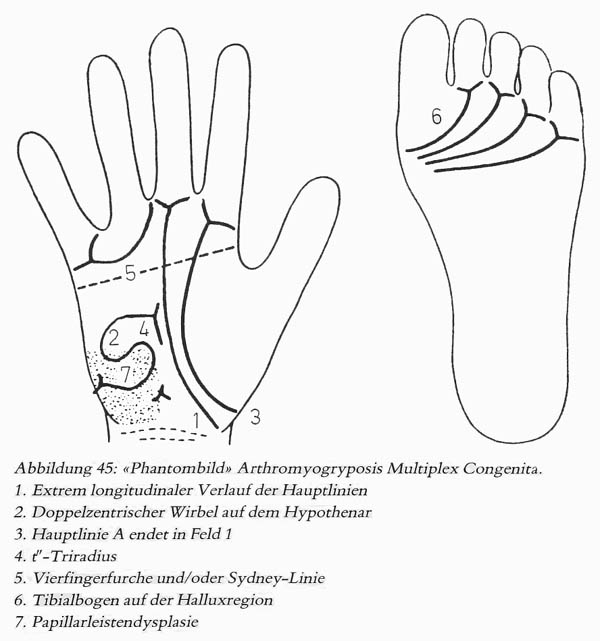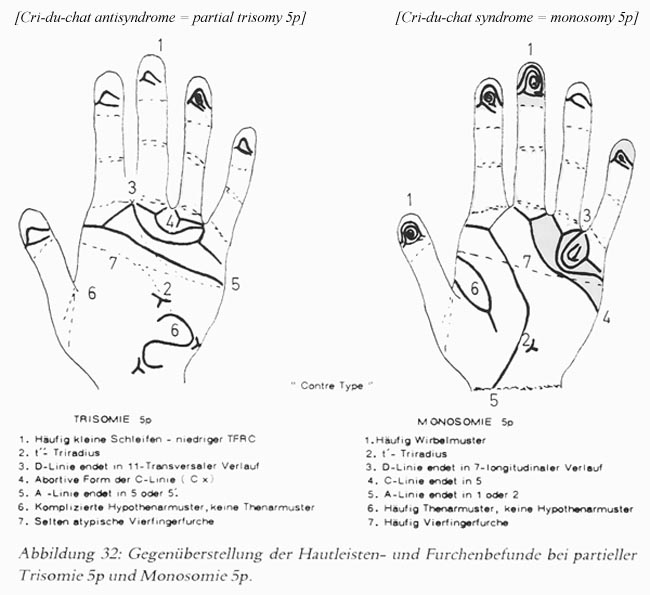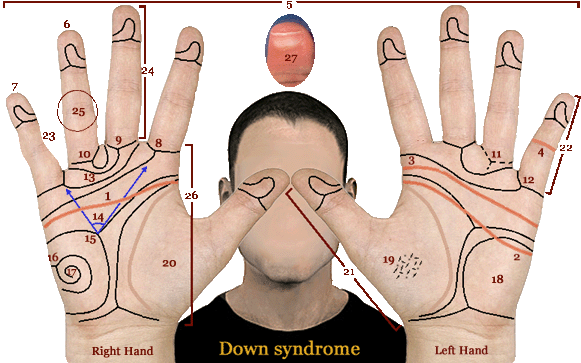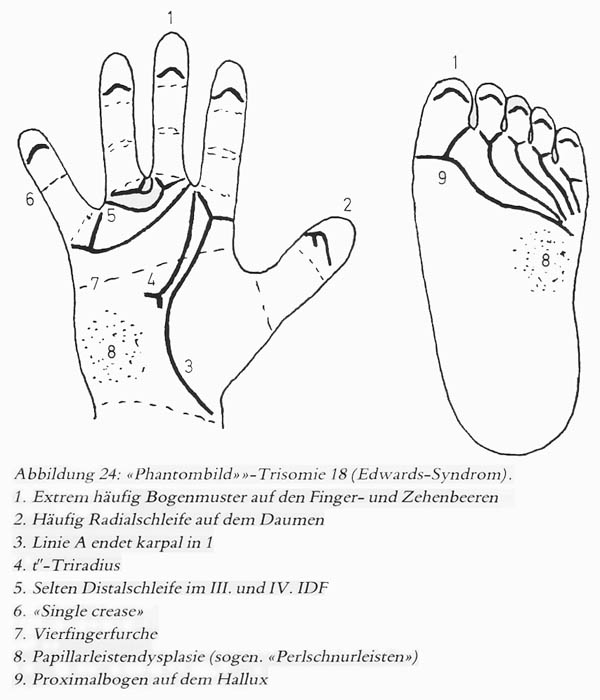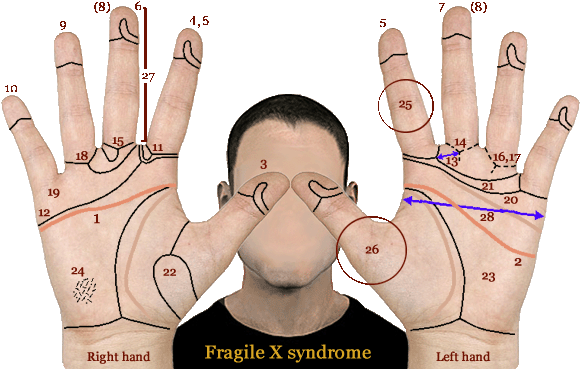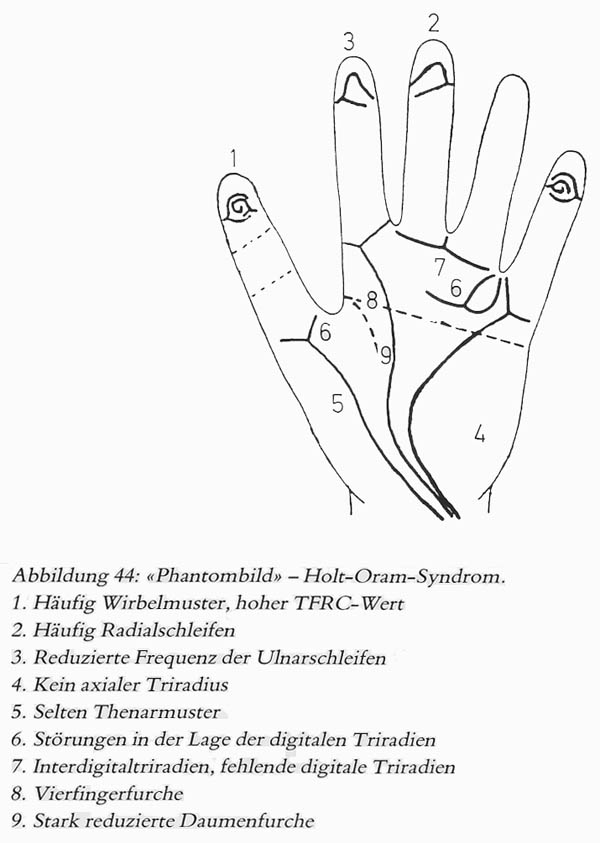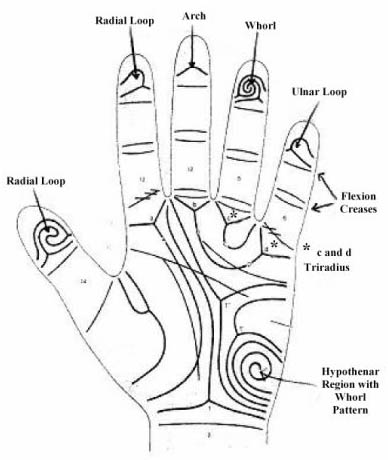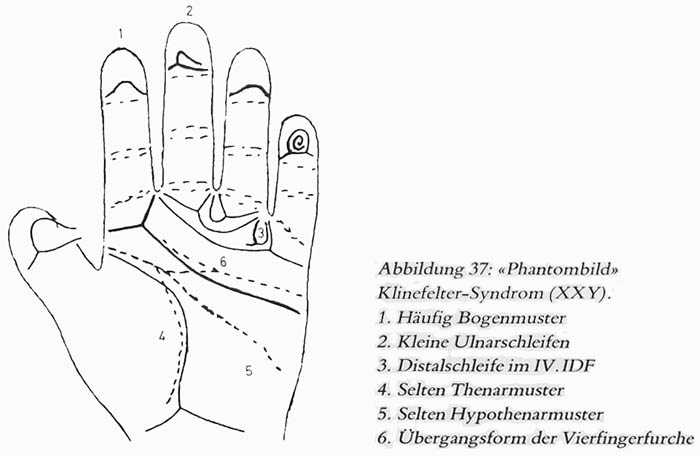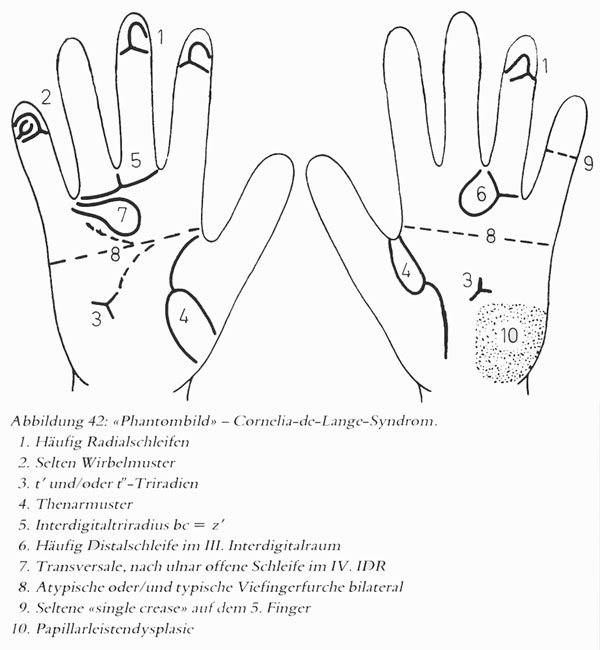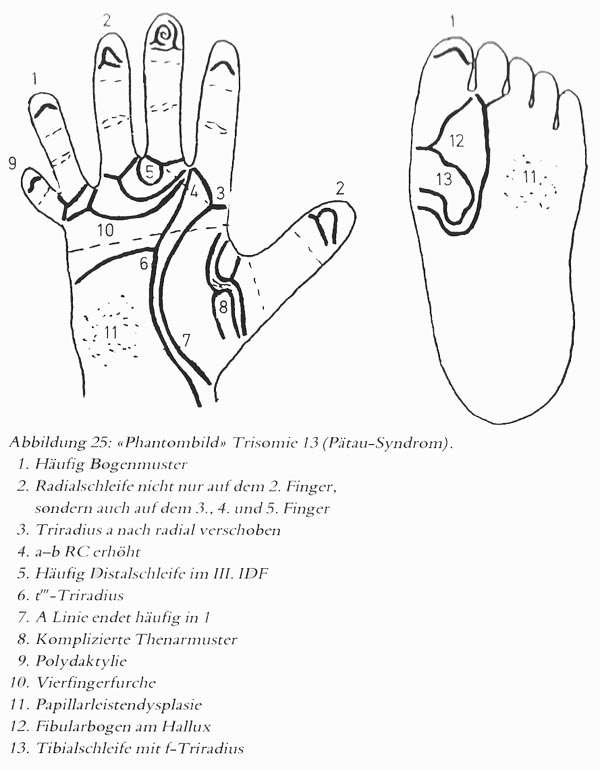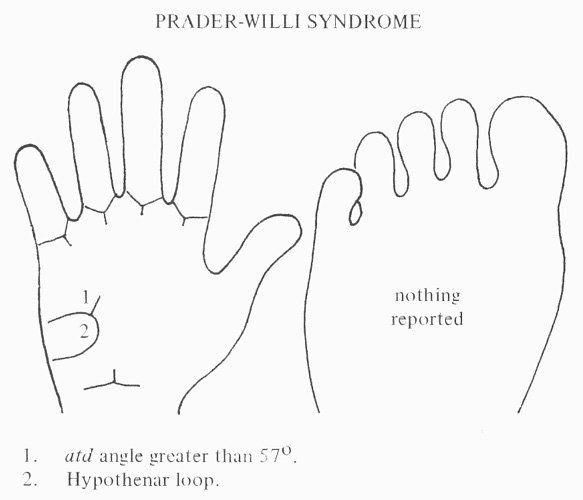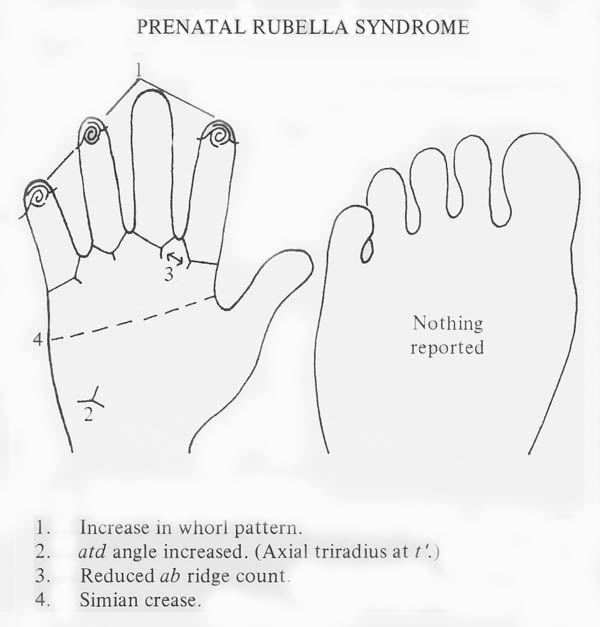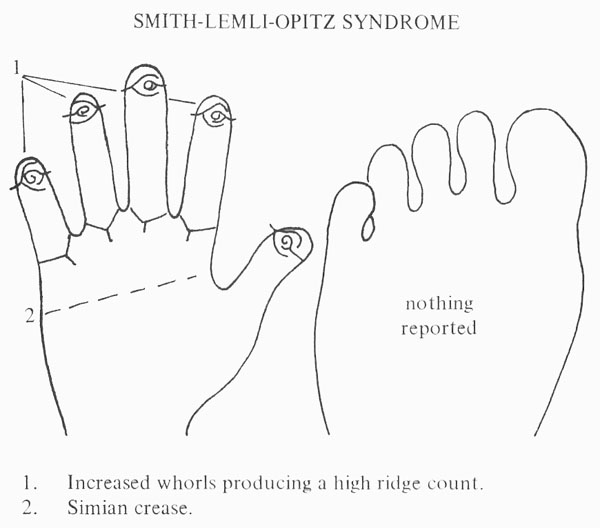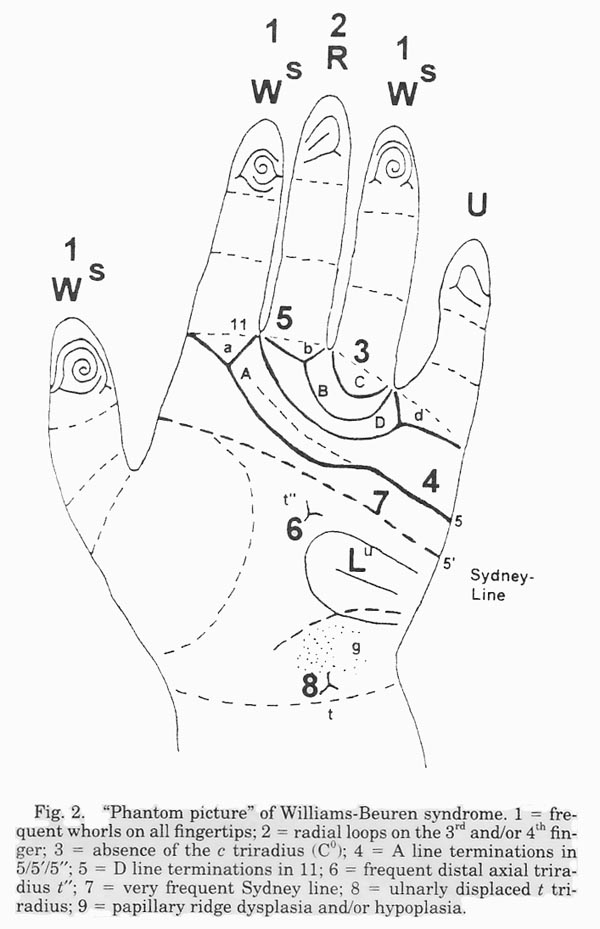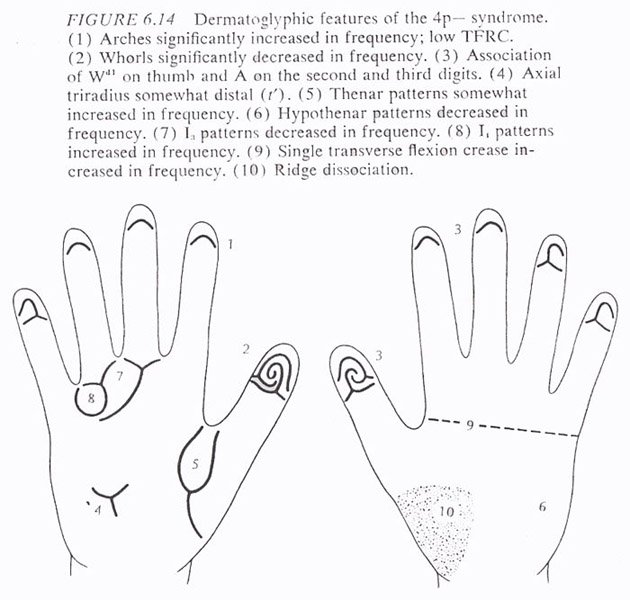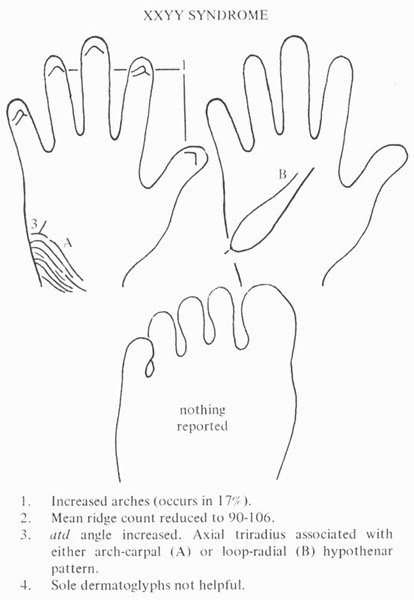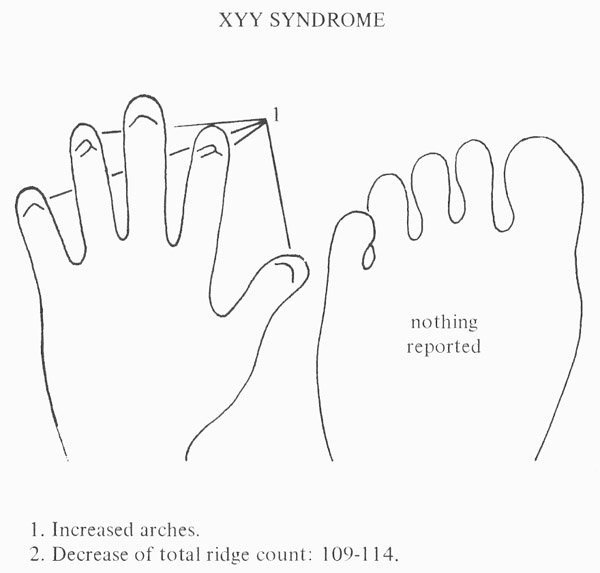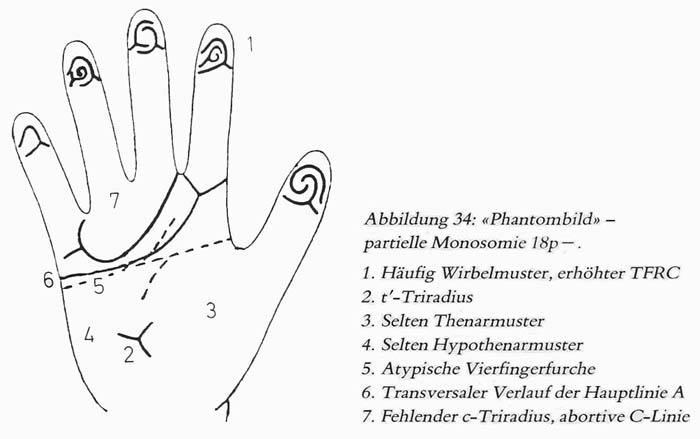
Scientific Hand Charts Collection:
Turner syndrome [XO]
2 Hand Charts for Turner syndrome!
Turner syndrome (TS) - also known as Ullrich-Turner syndrome, gonadal dysgenesis and 45,X [XO] - is a condition in which a female is partly or completely missing an X chromosome. Signs and symptoms vary among those affected, but nearly all are unable to have children.
Prevalence: close to 1 in 2,000 female births have Turner syndrome.
Two hand charts are available for Turner syndrome describing the significance of various typical dermatoglyphic features often combined with a simian line (= single transverse flexion crease) - see pictures below.
NOTICE: Individual hand features described below should not get associated in isolation with any theme; only combinations involving multiple hand levels have potential for diagnostic purposes.
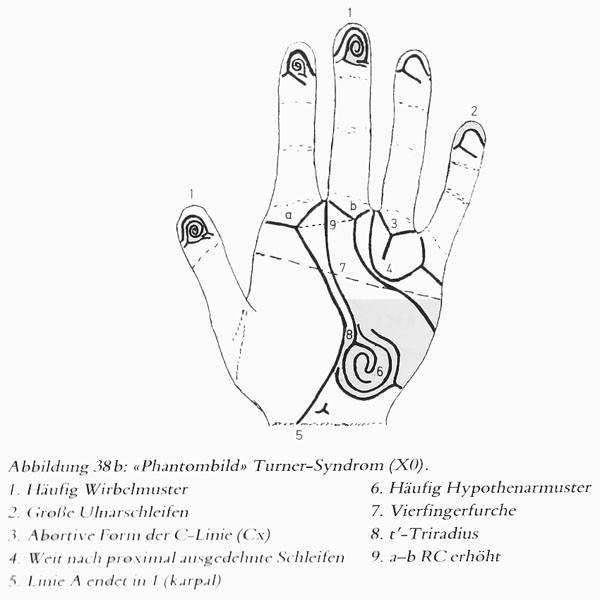
Hautleistenfibel (1981), p.97;
authors: A. Rodewald & H. Zankl
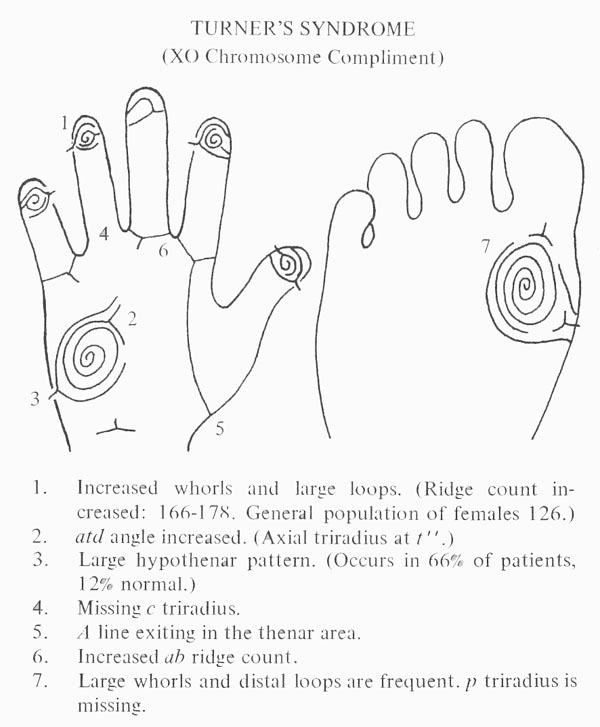
Handbook of Clinical Dermatoglyphs (1971), p.39;
authors: M.S. Elbualy & J.D. Schindeler
Other significant hand signs (not reported inside the hand charts):
Positive metacarpal sign, or shortening of the 4th metacarpal - see photo below - is the most characteristic skeletal finding in Turner syndrome; incidence in Turner syndrome varies from 33% to 77% - versus 10% in the general population (source: E. Laurencikas et al., 2009).
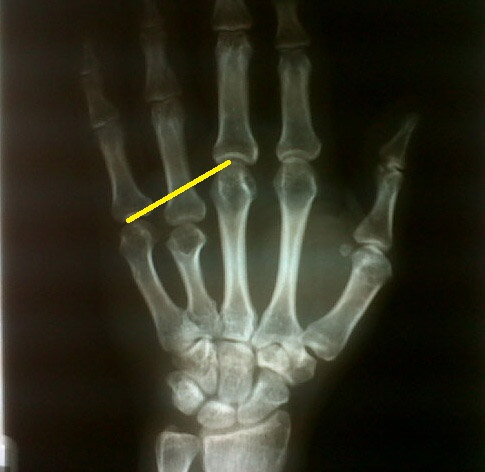
The characteristic nail changes seen in up to 70% of infants and young children with Turner syndrome are probably due to lymphoedema. Fingernails are often small. Nails show over-curvature, either concave (bowl-shaped) with the free edge turned up or deep set and overcurved side to side (convex overcurvature). Toenails tend to be more affected than fingernails. This can result in paronychia or pain when wearing shoes. Nail pitting may also occur. The nail changes tend to improve with age. (Source: DermNet NZ)
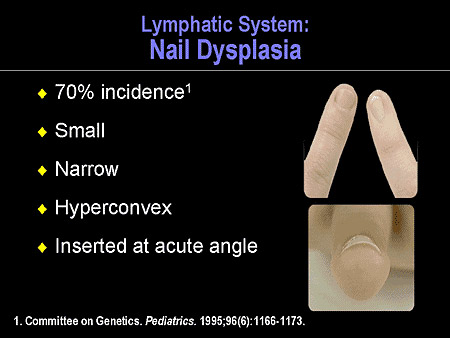
In Turner syndrome newborns hands (and feet) are often swollen or puffy at birth, and soft nails that turn upward at the ends when they are older is also often seen. These features appear to be due to obstruction of the lymphatic system during fetal development (source: Science Direct).
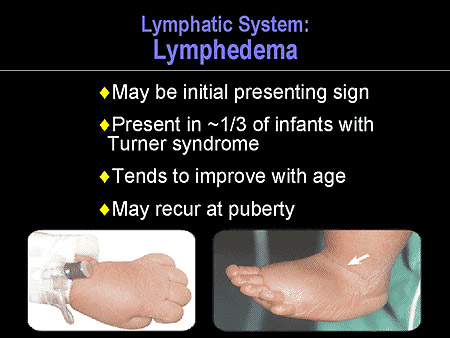
All significant hand signs listed above for Turner syndrome together cover five out of the nine perspectives of the hand as defined according Multi-Perspective Hand Reading (including hand level 4, 6, 7, 8 & 9).
A summary of the most significant hand sign combinations in Turner syndrome is described here:
Decoding the language of the hand:
hand sign combinations in Turner syndrome!
Hand charts are available for many other diagnostic issues;
start browsing HERE
![]() SCIENTIFIC HAND CHARTS: Introduction
SCIENTIFIC HAND CHARTS: Introduction
Hand charts for Big Five personality dimensions:
• Hand chart(s) for Agreeableness (2x: 1 in 4 people)
• Hand chart(s) for Conscientiousness (2x: 1 in 4 people)
• Hand chart(s) for Extraversion (2x: 1 in 4 people)
• Hand chart(s) Neuroticism (2x: 1 in 4 people)
• Hand chart(s) Openness (2x: 1 in 4 people)
Hand charts for diseases:
• Hand charts for hypercalcemia (1 in 4,000 people)
Hand charts for syndromes:
• Hand charts for arthrogryposis (1 in 10,000 people)
• Hand charts for cri-du-chat syndrome (1 in 30,000 people)
• Hand charts for Down syndrome (1 in 700 live births)
• Hand charts for Edwards syndrome (1 in 6,000 live births)
• Hand charts for fetal alcolhol syndrome (1 in 500 people)
• Hand charts for fragile-X syndrome (1 in 5,000 people)
• Hand charts for Holt-Oram syndrome (1 in 100,000 live b.)
• Hand charts for Kabuki syndrome (1 in 32,000 people)
• Hand charts for Klinefelter syndrome (1 in 1000 males)
• Hand charts for de Lange syndrome (1 in 15,000 live births)
• Hand charts for Marfan syndrome (1 in 5,000 people)
• Hand charts for Patau syndrome (1 in 15,000 live births)
• Hand charts for Prader-Willi syndrome (1 in 15,000 births)
• Hand charts for Rubella syndrome (1 in 100,000 people)
• Hand charts for Rubinstein syndrome (1 in 200,000 births)
• Hand charts for SLOS (1 in 40,000 births)
• Hand charts for Turner syndrome (1 in 2,000 female births)
• Hand charts for Warkany syndrome (1 in 200,000 births)
• Hand charts for Williams syndrome (1 in 14,000 births)
• Hand charts for Wolf-Hirschhorn syndrome (1 in 50,000 b.)
• Hand charts for XXYY syndrome (1 in 30,000 male births)
• Hand charts for XYY syndrome (1 in 1,000 male births)
• Hand charts for 18 deletion syndromes (2 in 40,000 live b.)
NOTICE: Reflexology hand charts are not included in this section because the scientific foundation of any of such charts is actually unknown; nevertheless, you can read more about the fundamentals of such charts HERE.
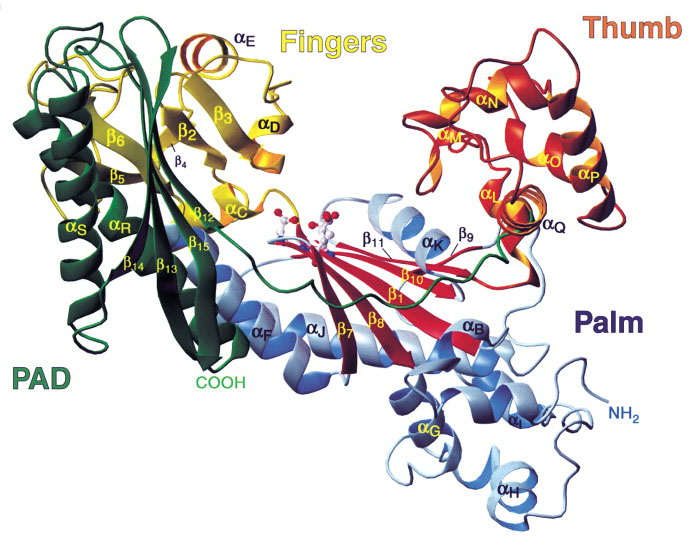
Other charts & maps:
• Fingerprints world map
• Hand reading experts world map
• Hand reflexology charts
